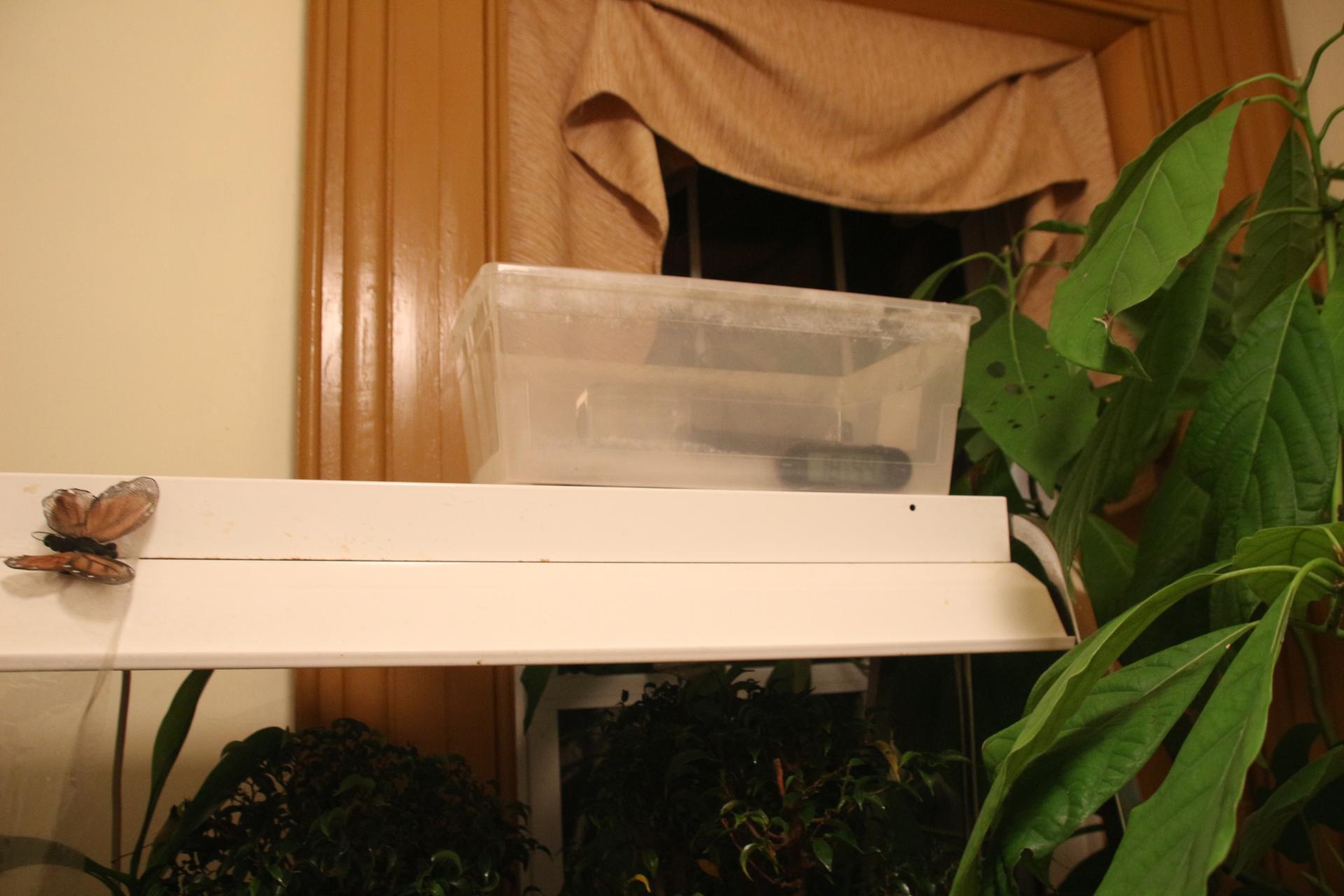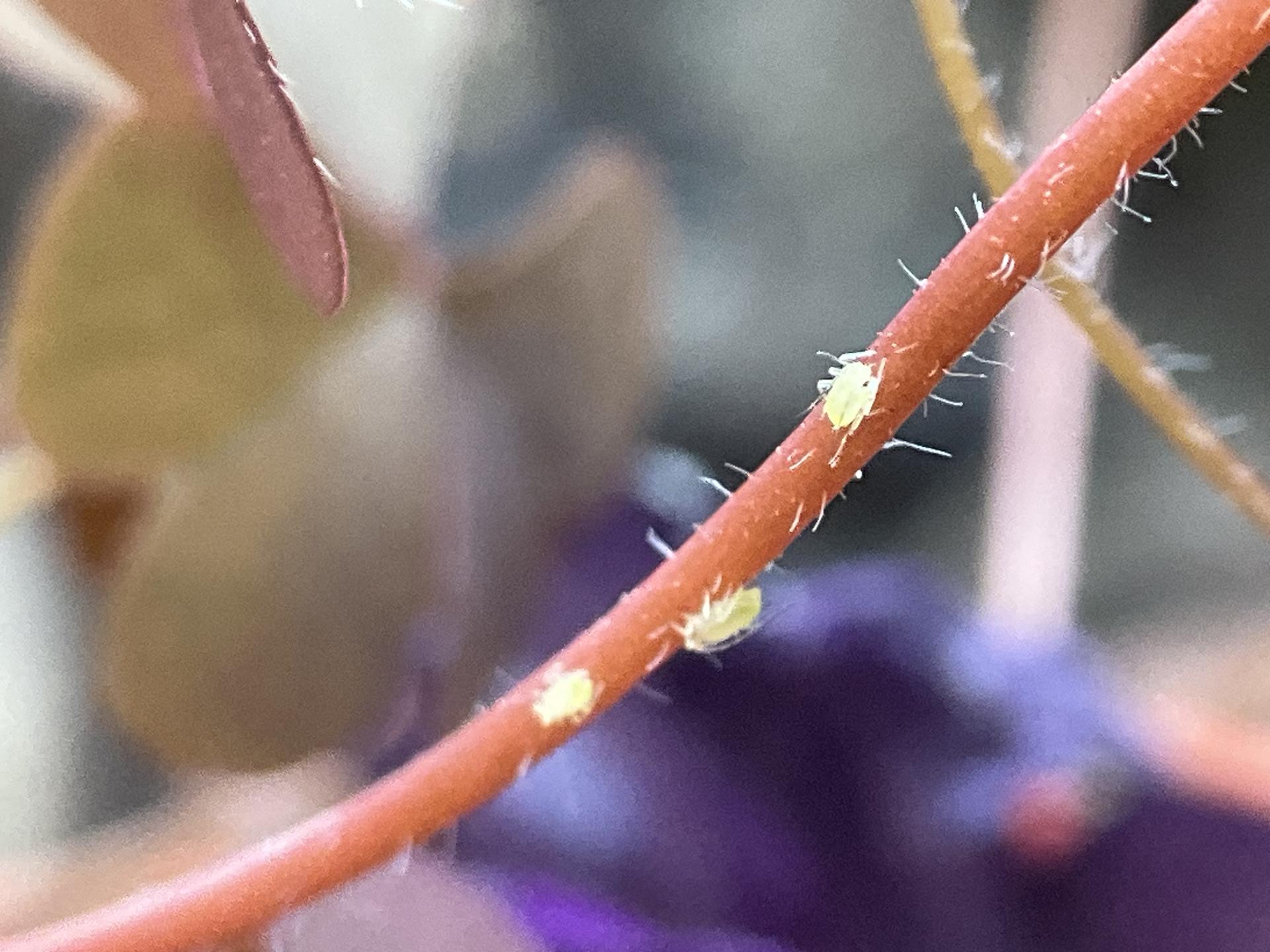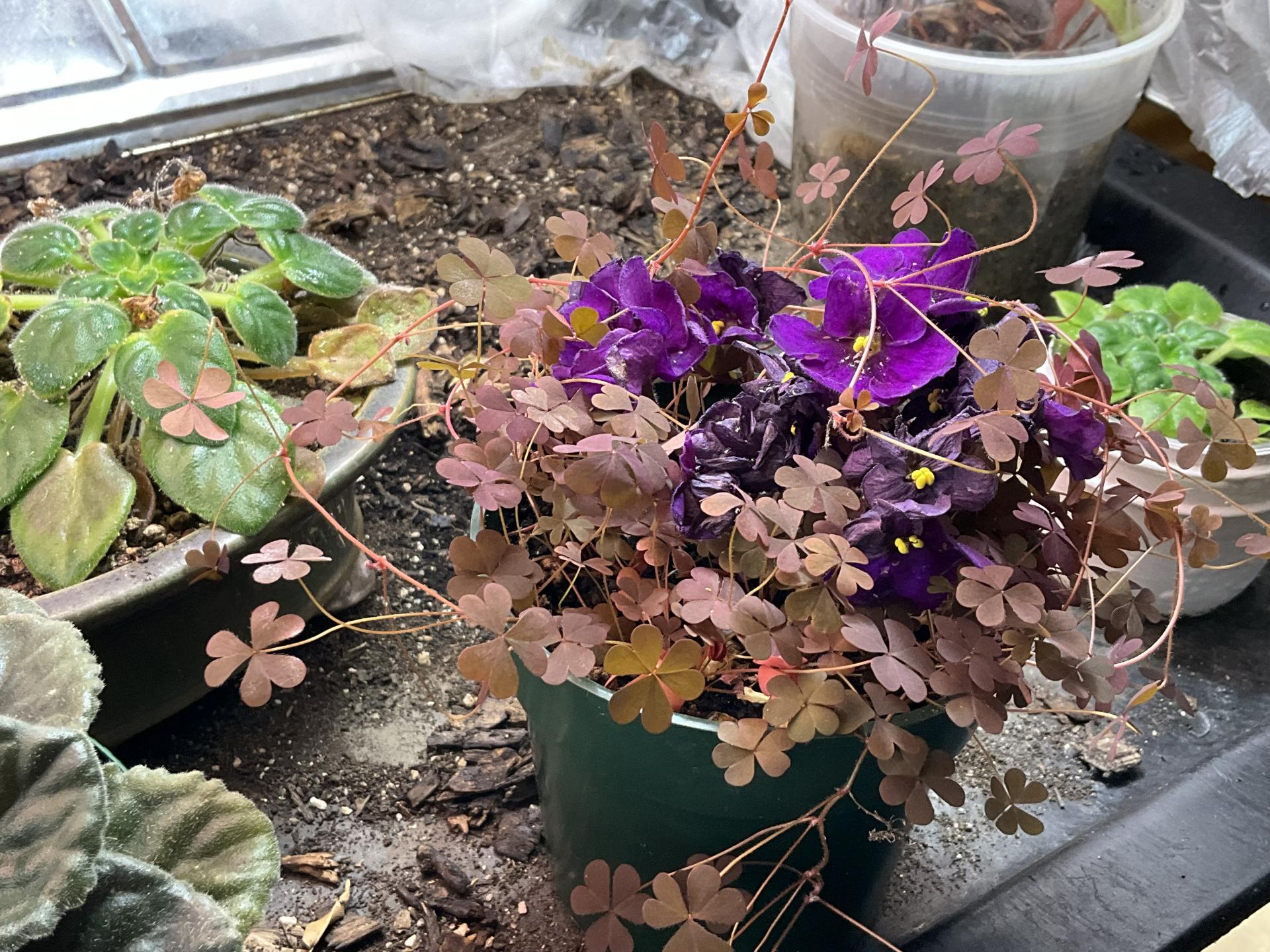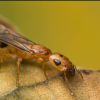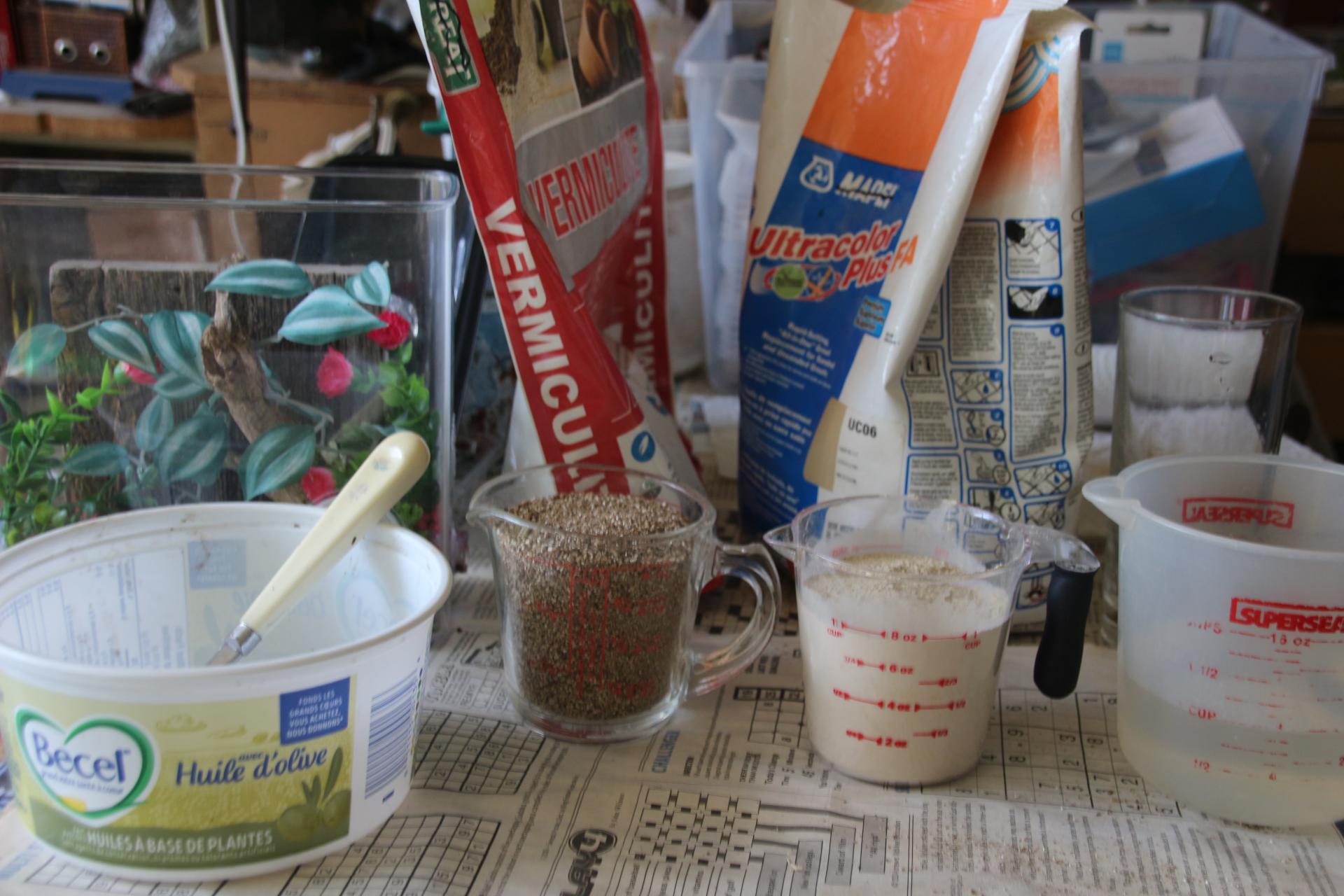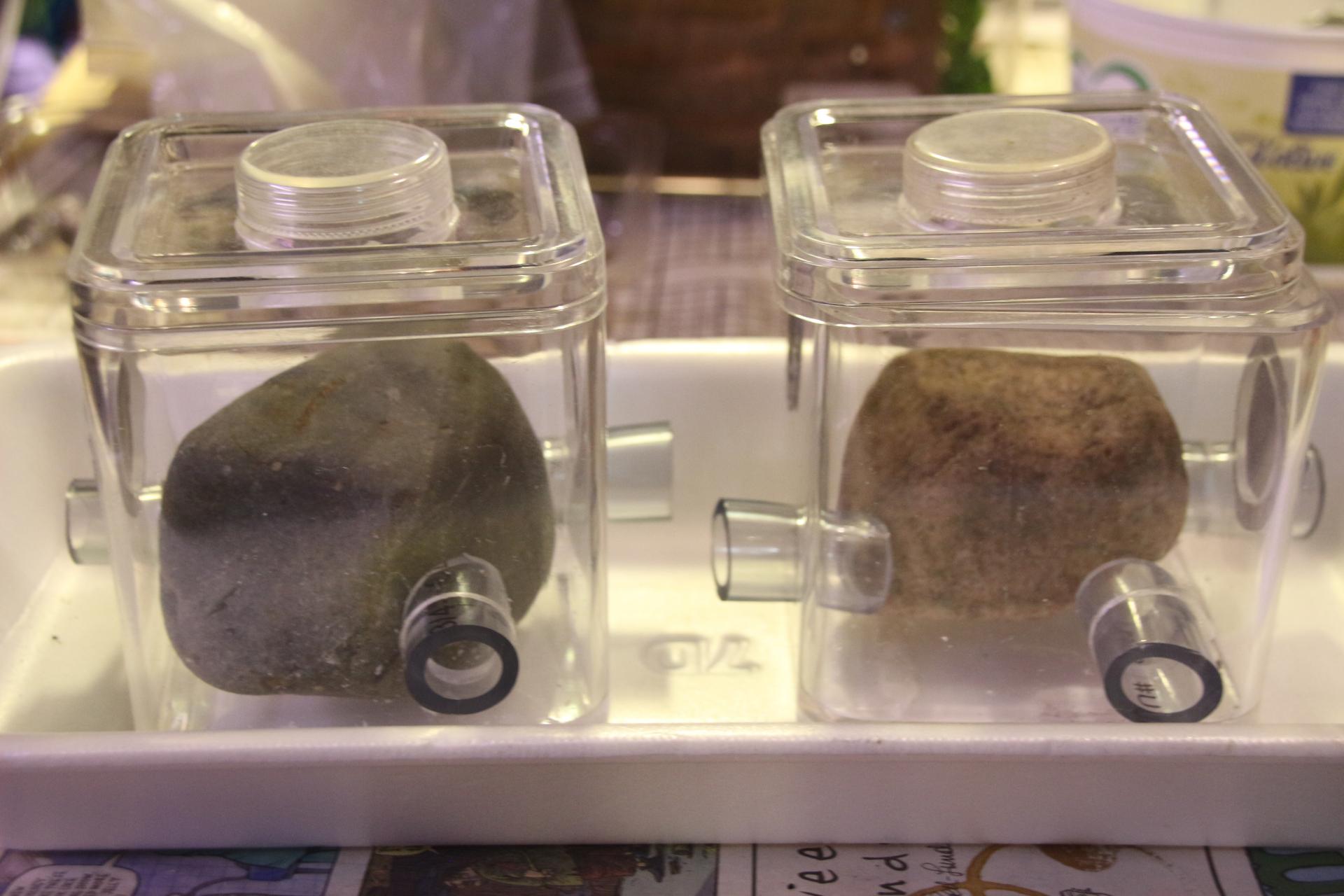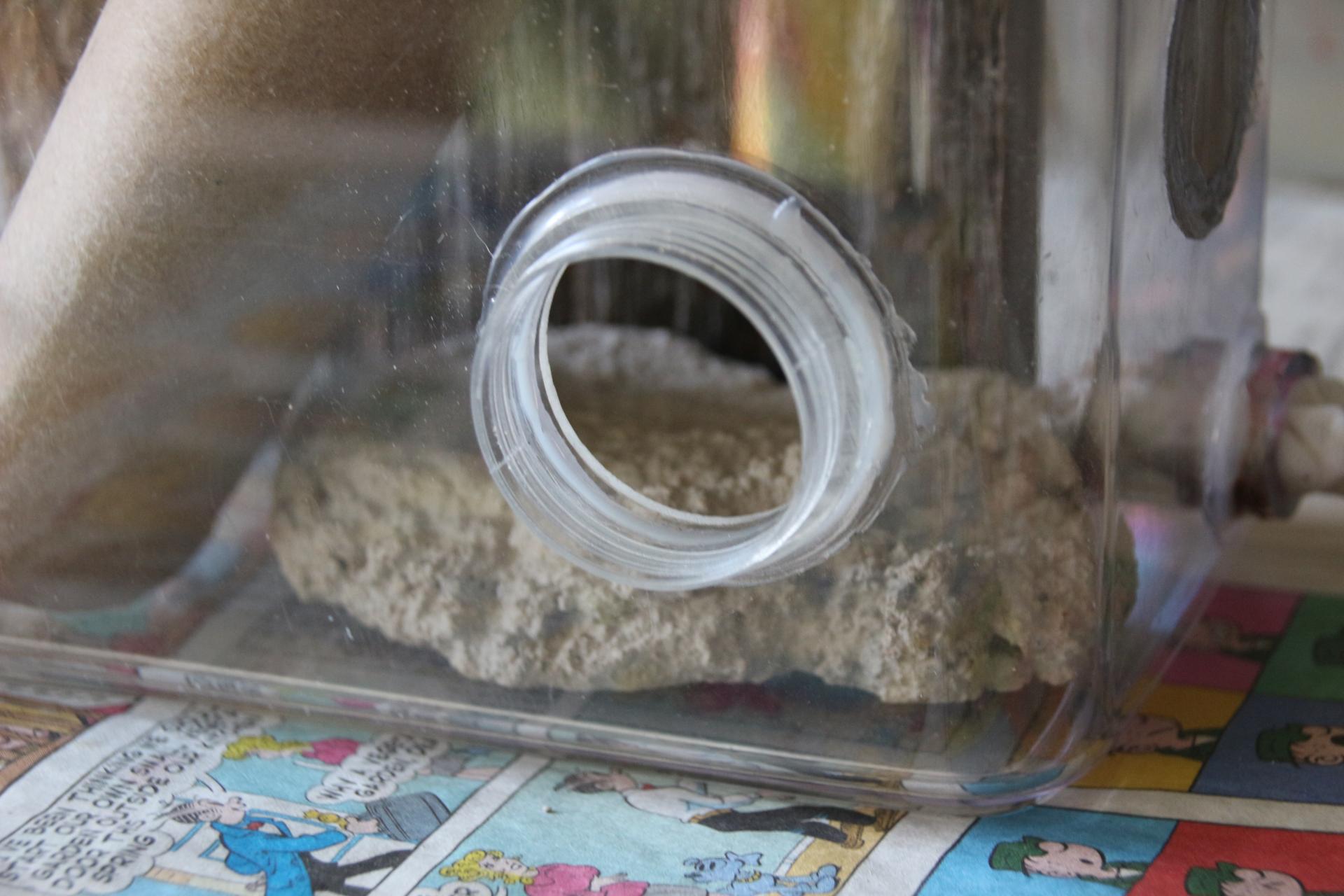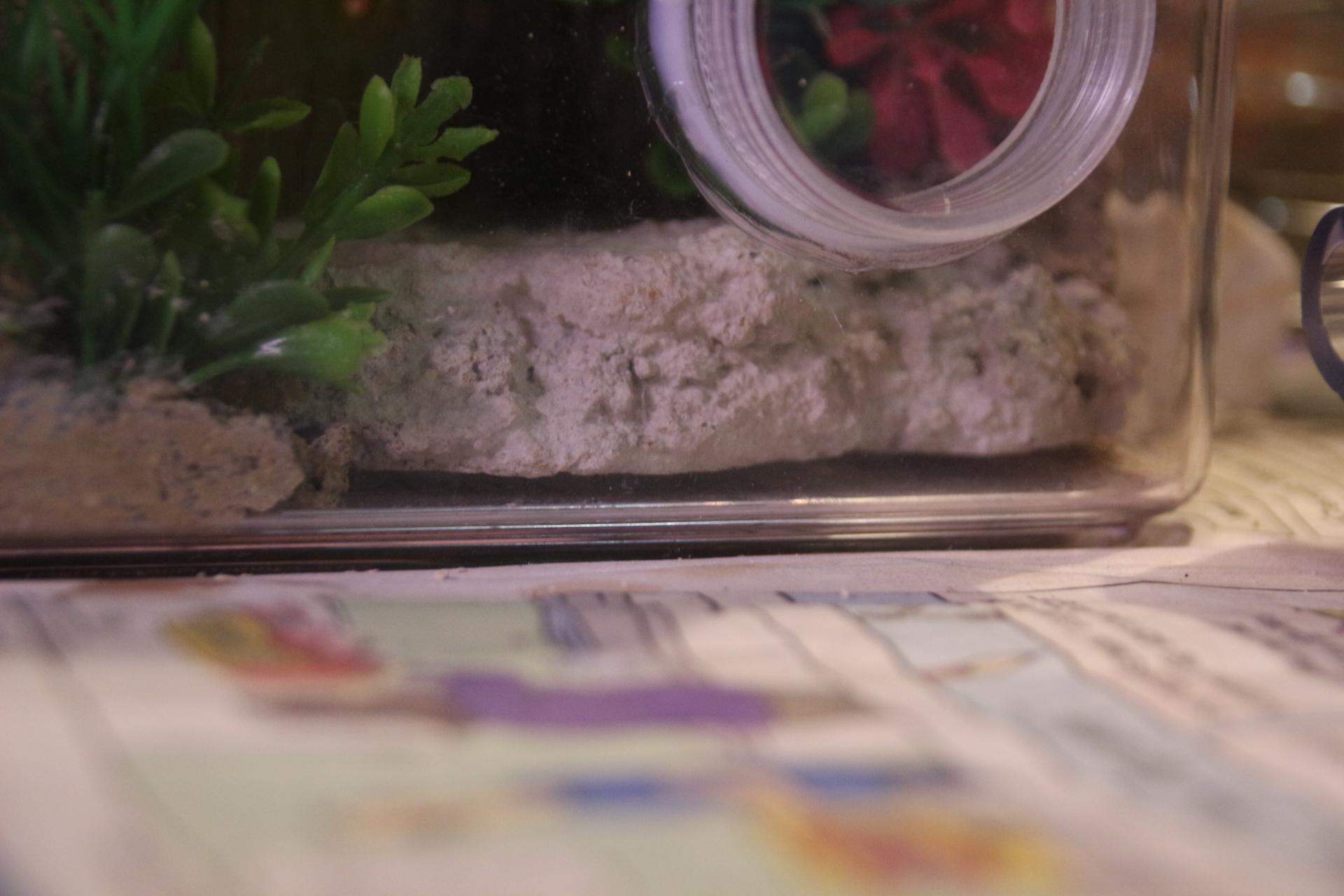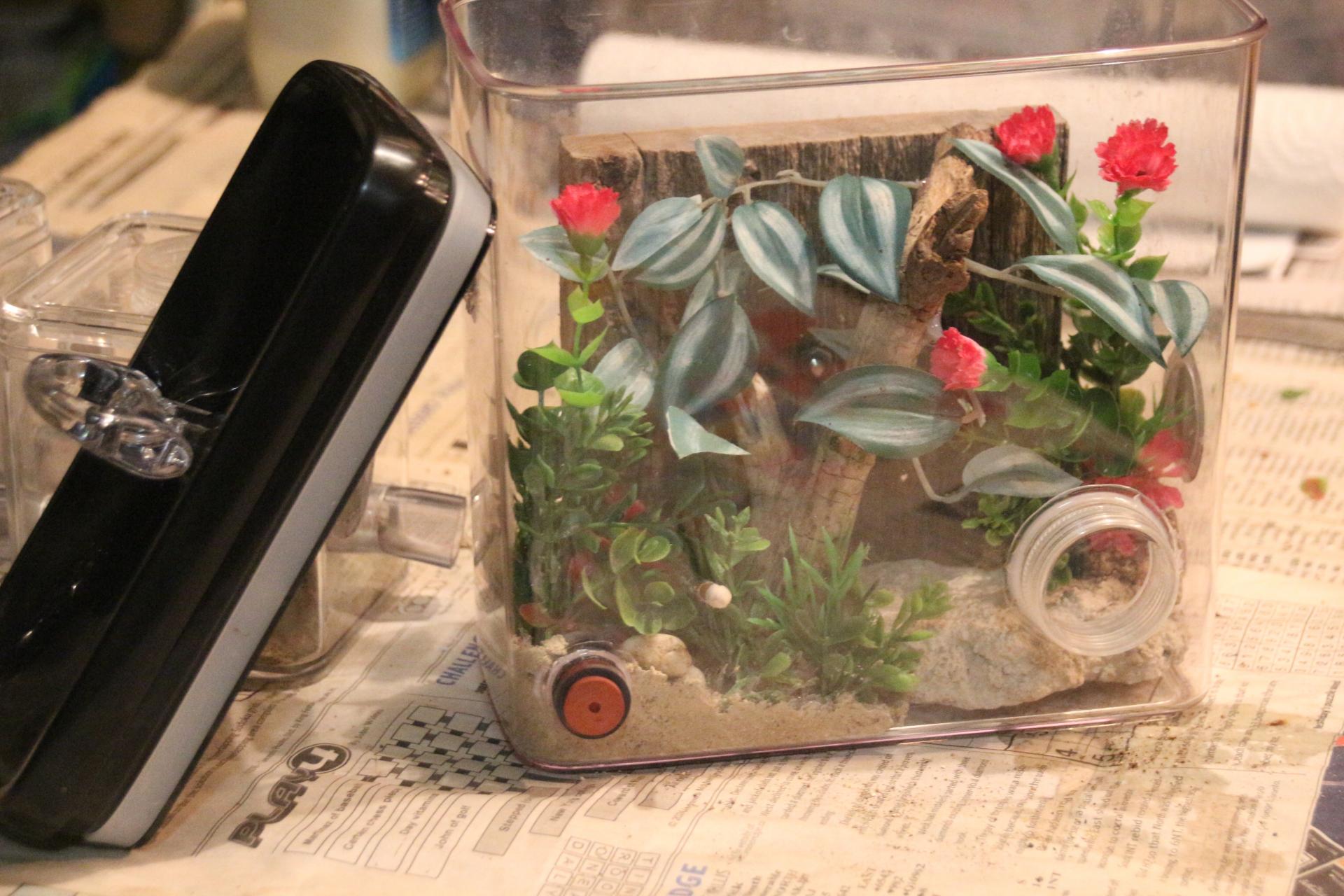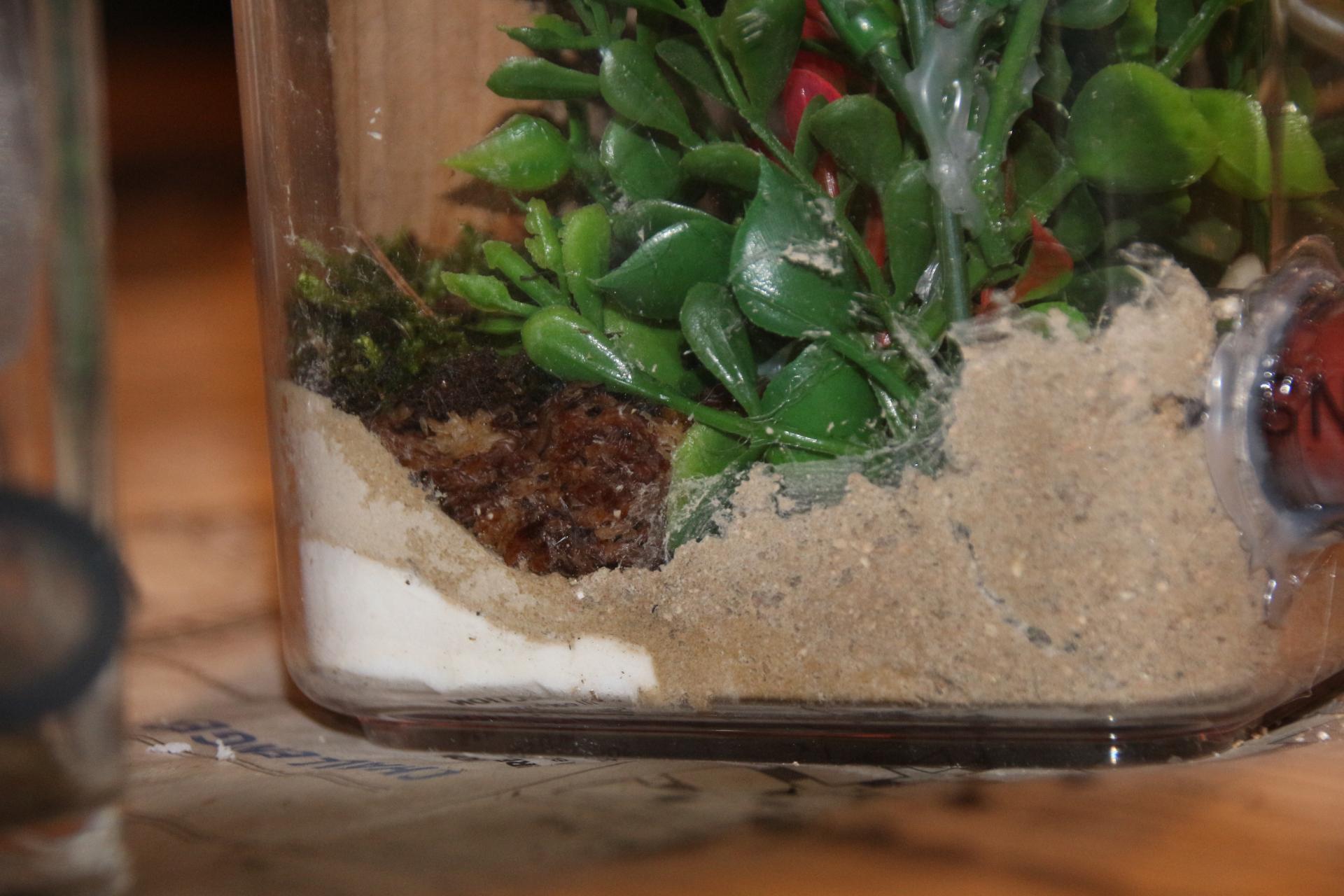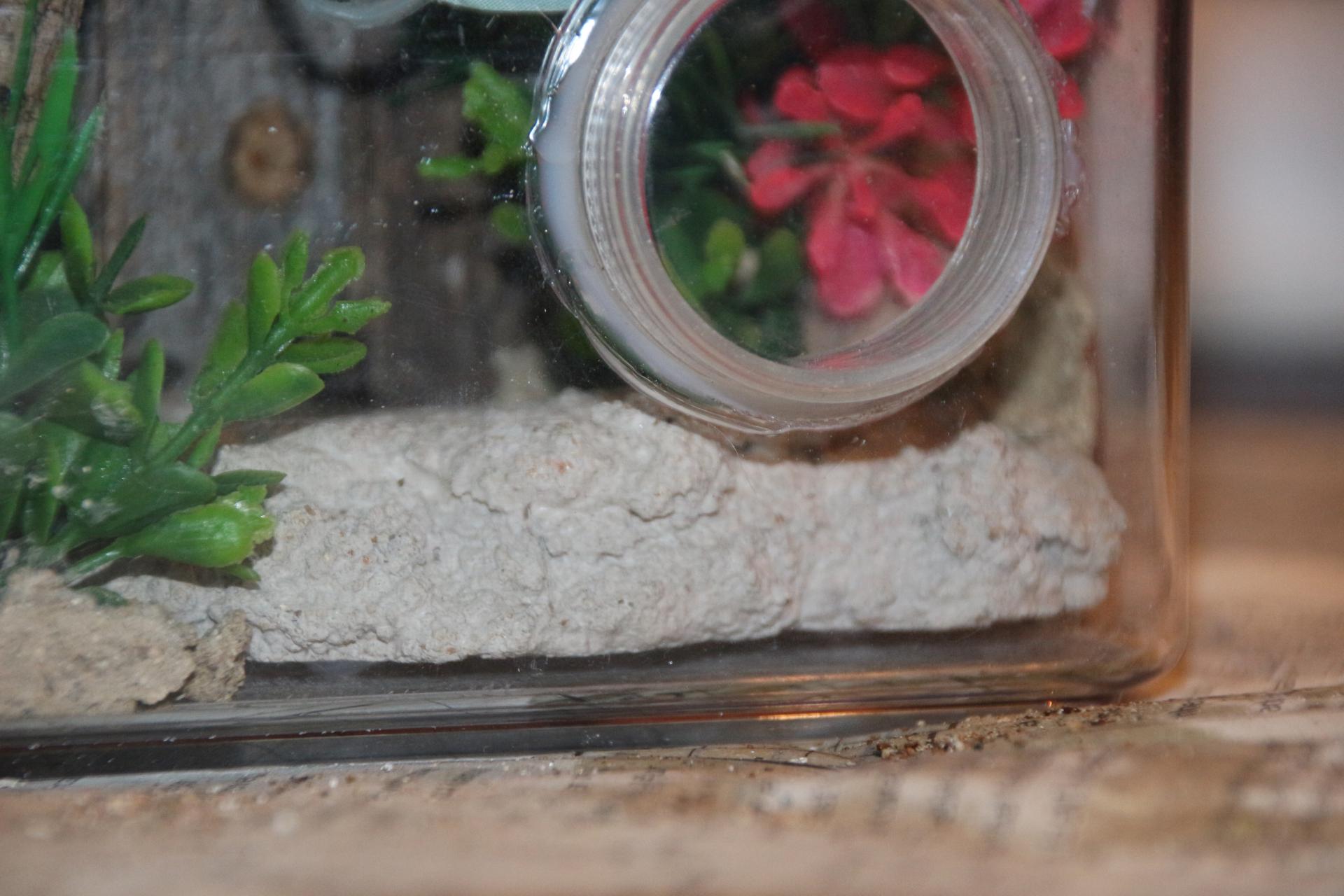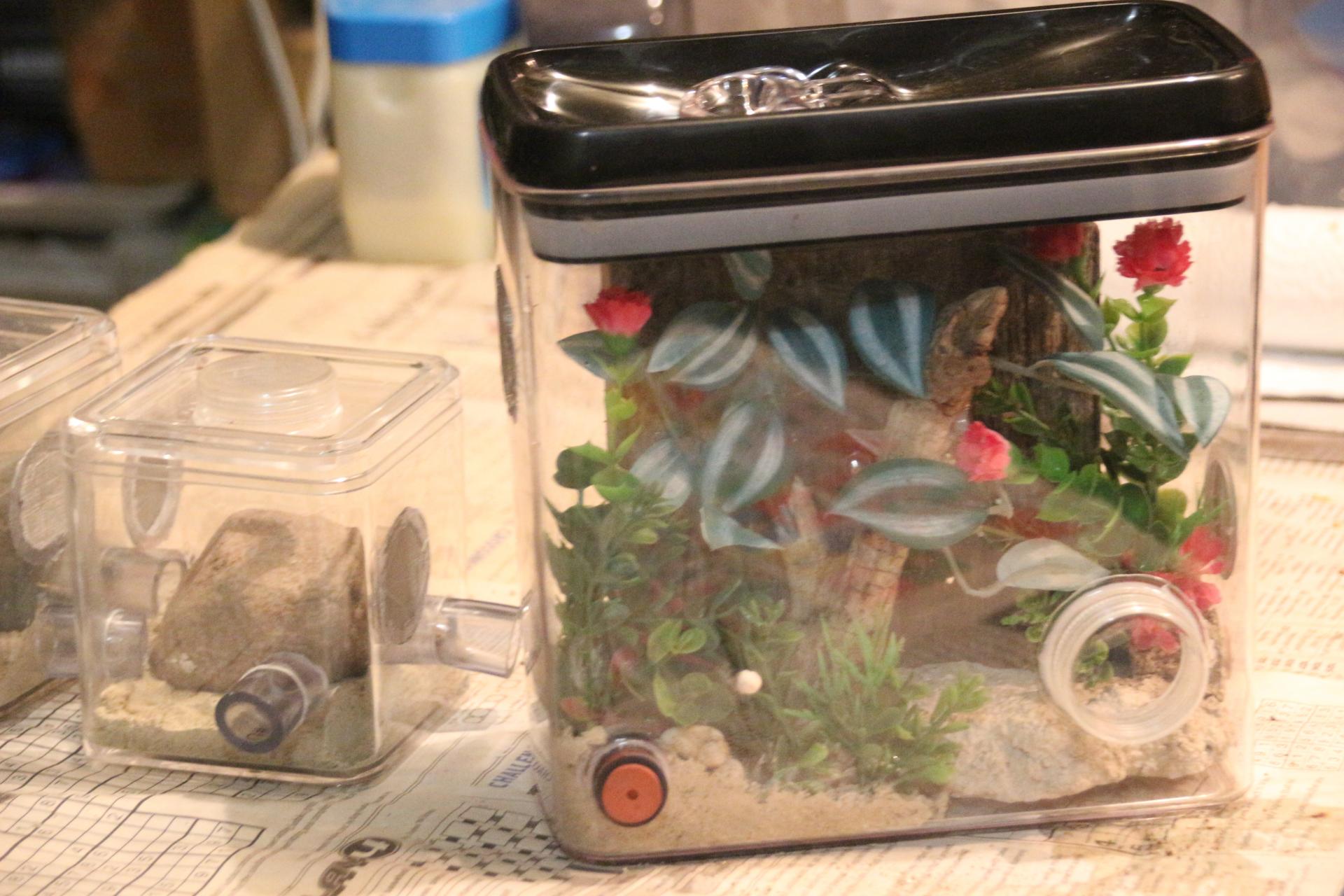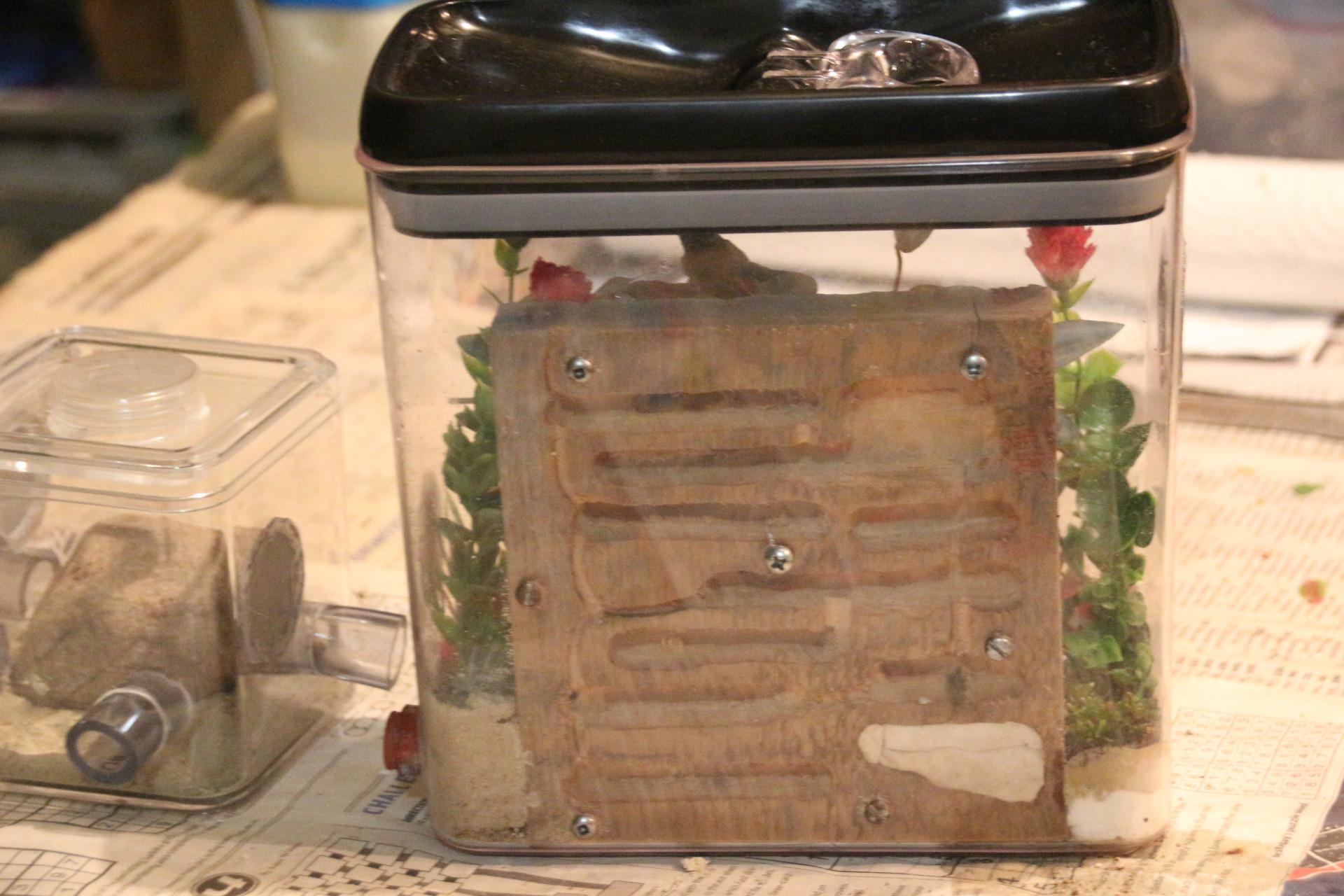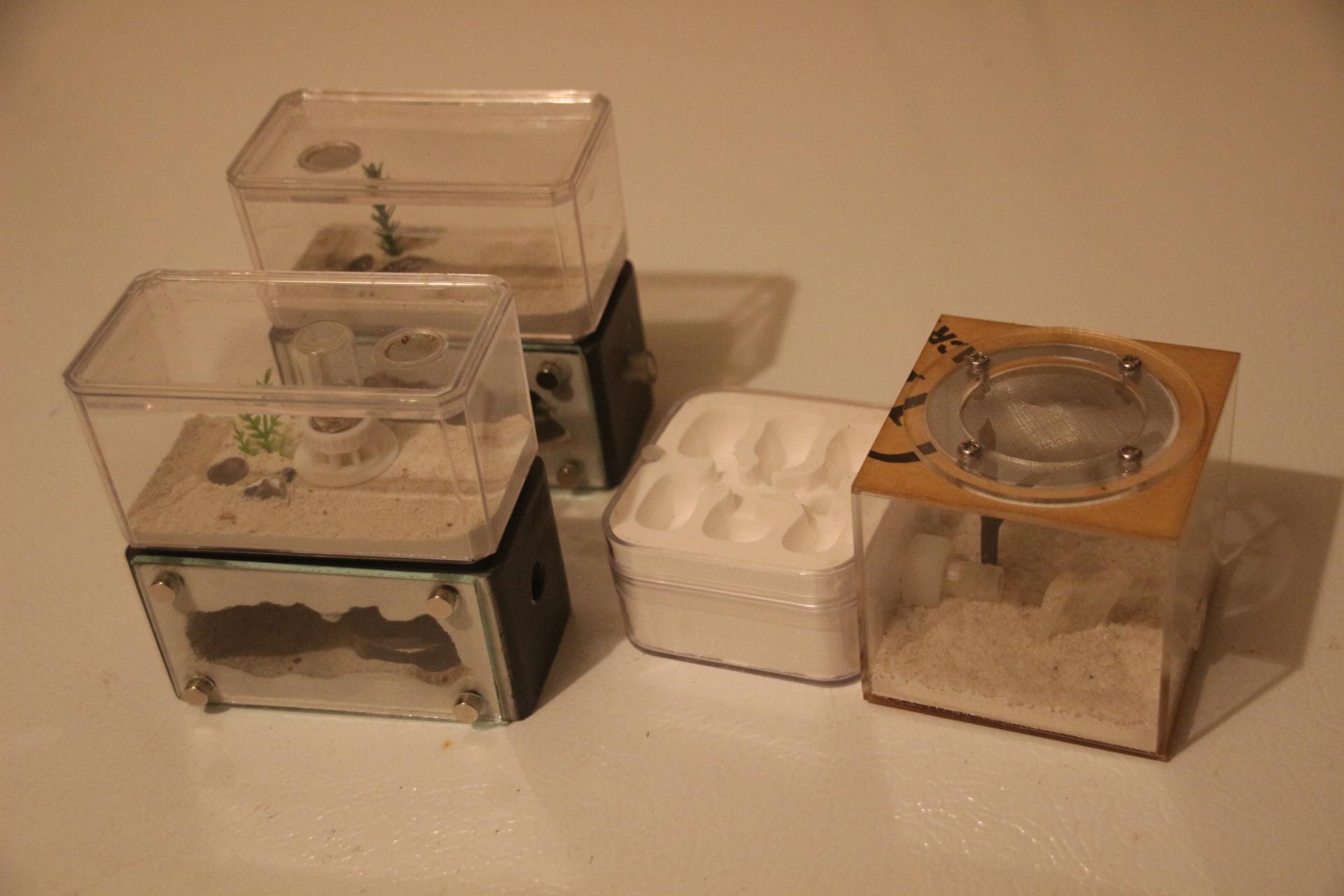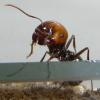- Formiculture.com
- Forums
- Gallery
- Members
- Member Map
- Chat

RPT's Journal
Started By
rptraut
, Jul 30 2024 6:24 PM
camponotus tetramorium brevicornis neoniger depilis crematogaster
92 replies to this topic
#61
 Offline
-
Posted December 27 2024 - 4:24 AM
Offline
-
Posted December 27 2024 - 4:24 AM
That’s great news! Best of luck with the living room colony.
- rptraut likes this
"The ants are a people not strong, yet they prepare their meat in the summer." Prov. 30:25
Keep ordinary ants in extraordinary ways.
Keep ordinary ants in extraordinary ways.
#62
 Offline
-
Posted January 11 2025 - 12:26 AM
Offline
-
Posted January 11 2025 - 12:26 AM
Update 11JA25
XLTetramorium Colony - Are These Majors?
This colony was living in a flowerpot in my workshop when I found them in 2023. I call them the XLTetramorium colony because from the start I noticed that some workers were significantly bigger than the others - extra-large. This colony's grown since I found them, but very slowly. I suspected at one point that they might have lost some brood from flooding or some other problem which accounted for their slow growth. Late last season I brood boosted them with about sixty workers and colony activity picked up markedly. Since Christmas I've had this colony on my plant stand where they get heat from the lights below. Temperatures fluctuate between 18 C (64 F) at night to 24 C (75 F) during the daytime. They've grown nicely on a diet of flies, crickets, bees, sow bugs and meat products like chicken, liver and egg yolk while I've had the pleasure of watching them. See the video below to see what I mean.
Since my other colonies are in winter storage, I'll update this colony as winter progresses.
RPT
- ANTdrew, RushmoreAnts, AntBoi3030 and 3 others like this
My father always said I had ants in my pants.
#63
 Offline
-
Posted March 1 2025 - 11:05 PM
Offline
-
Posted March 1 2025 - 11:05 PM
Hello Everyone;
Even though winter is still firmly in control outside, I brought some of my colonies out of the root cellar on Feb. 22, 2025. It's taken them the better part of a week to liven up and start taking water, sugar/water and protein. The video below shows the activity of my largest Crematogaster colony on Mar 1, 2025.
As you can see in the video, condensation has become a problem and any suggestions as to how I might get rid of it, or indeed if it even is a problem, will be appreciated.
The other colonies I took out of the root cellar include a founding Lasius queen, a founding Lasius neoniger colony, and a founding Lasius brevicornis colony. They can all use the head start on the coming season.
While observing my XLTetramorium colony this winter, I've noticed something interesting. These ants are very tidy and often bring their trash and refuse to the feeding tray. They'll often bring a large number of larval fecal pellets that were expelled as part of the pupation process, signaling the change of a large number of larvae into pupae. This is usually followed by a slowdown in foraging and protein feeding. This happened about a week ago and the colony is only now starting to forage and take protein again in response to larvae from the next batch of eggs eclosing (hatching), growing, and requiring protein.
RPT
- RushmoreAnts, Ants_Dakota and AntsGodzilla like this
My father always said I had ants in my pants.
#64
 Offline
-
Posted March 2 2025 - 11:29 PM
Offline
-
Posted March 2 2025 - 11:29 PM
Update 03MR25
Crematogaster Colony Cr3 Update
In the previous video there was an obvious condensation problem. I've been keeping this colony on top of my plant lights for heat. I was able to reduce the condensation by moving the incubator, a lidded plastic box I keep them in, to a cooler part of the plant lights. Previously, when placed in the warmer area of the lights, daytime temperatures in the incubator rose to 25C (77F) which was too high for the ambient temperature of the rest of the room, therefore condensation which was dripping on the colony. As well as moving them to a cooler area, I removed the lid of the incubator to allow for more evaporation of excess water. Daytime temperatures now range to 22C (72F) which is still warmer than the 18C (65F) temperature of the room. There's still a small amount of condensation on the top of the tube, but it isn't dripping.
I've been feeding this Crematogaster colony crickets, flies, sow bugs, drone bee pupae, chicken - meat and liver, turkey and raw ground pork. The queen looks to have settled down to the business of laying eggs.
RPT
- RushmoreAnts, AntBoi3030, Ernteameise and 2 others like this
My father always said I had ants in my pants.
#65
 Offline
-
Posted March 3 2025 - 10:16 PM
Offline
-
Posted March 3 2025 - 10:16 PM
03MR25
I hope you don't mind if I stray from entries that are strictly ant keeping and tell some stories from my life that might help you. Call it the musings of an old man, if you like, my students used to call it "Story Time with Uncle Bob".
How I Learned How to Learn
Speed Reading
Being able to read textbooks and articles quickly, in school and in life, made learning easier for me. When I was in high school an extra course was offered for anyone wanting to learn how to speed read. My fellow students couldn't understand why anyone would want to take an extra course that wasn't required. I was already an avid reader, but I reasoned that if I intended to go to University or College, being able to speed read would help me get through the texts and readings that I would, no doubt, be required to read. I took the course which started out using a computer screen that revealed a story or text line by line. The idea was to start out reading each line slowly, and as the course progressed, the advancing lines would be speeded up. Before moving up to a faster speed, a comprehension test had to be passed to show you had not only read the lines, but that you had understood what you had read.
Once I got good at reading single lines, it was increased to two lines at a time with the intention that we were to read the first line forwards and the second line backwards. Reading the key words that were fundamental to the content of the text and skipping past the unimportant connecting words and "fluff" was the key to speed reading. Also, in most cases a good writer will tell you about the important points in the introductory paragraph or two and then summarize the key points in the final few paragraphs. Many times, the content of an article will expand on important points or factors that support the premise of the text and speed reading allowed me to understand those points without reading every word. I could slow down my reading for complicated sections and speed up through simpler sections. Speed reading, at whatever speed you're capable of, might help you get through that stack of texts or books from the library or internet, get the point of each paragraph, and move on.
Study Sheets
I found the best way to learn a subject was to understand it. I took many courses dealing with chemistry, mathematics, biology etc. and the key to learning them, I found, was to understand the connections, the reasons why things happen the way they do, and these usually follow the logical and understandable rules of the natural world.
To study for tests or exams, I would review my notes and readings. I made "Study Sheets" for the points of a subject that I might need a memory freshener before going in to write an exam. I knew the things I understood, these didn't need to be written down, I understood them. The things I'd put on a study sheet were formulas, lists, details, or any points I felt I'd need to see one last time before writing the exam. I'd often write complicated formulas or details on my test paper as soon as I sat down, no worries about last minute memory loss. I saved these sheets through the term, and they made studying for a final exam much easier. I had all the things I needed to remember, summarized.
Developing a Photographic Memory
In college, I realized I was able to visualize these study sheets, during a test, and actually read the things I had written down, in my mind, a sort of photographic memory. I didn't need to memorize each point; I could see them written on the page. Try it yourself and see if you can develop this skill. Start slowly by visualizing something like your car license plate. Any time you think of it, picture the license plate in your mind, and what it has written on it. When you feel ready you can move on to a section of your notes or study sheet. Look at the material and try to duplicate it on a separate piece of paper, from what you see in your mind. Like any skill, you'll get better at it with practice. I found that reviewing my course material while doing this was a great way to study.
Study Your Weak Subjects More
In college we were graded on the GPA (Grade Point Average) system. The highest GPA you could achieve was a 4.0, which meant you had achieved a grade of 80% and above. It took me a while to figure out that as long as I felt I could achieve 80% or greater in a subject, there was really no need to study extensively for those tests. I was better off to spend my time studying subjects that I needed to get the marks up to 80% or higher. By spending more time studying my weaker subjects I got a 4.0 GPA and received the award for "Highest Academic Achievement" in my final term of Agricultural Business Management.
My hope is that some of these techniques will be of benefit to you in your studies and life. They worked for me and, with practice, might work for you too.
RPT
- ANTdrew, RushmoreAnts, Ants_Dakota and 3 others like this
My father always said I had ants in my pants.
#66
 Offline
-
Posted March 5 2025 - 6:07 AM
Offline
-
Posted March 5 2025 - 6:07 AM
RPT, life lessons from older generations are far to rare in this world; your musing are always welcome in my opinion! Have you by chance read "How to read a book" by Mortimer J Adler? Some of your musings sound similar to his argument about inspectional reading.
- rptraut, AntsGodzilla and MyrmecologyMaven like this
Go to the ant, you sluggard; consider its ways and be wise! It has no commander, no overseer or ruler, yet it stores its provisions in summer and gathers its food at harvest. -Proverbs 6: 6-8
My Ant Shop Here I have PPQ-526 permits to ship ants nationwide
Attention Ant-Keepers in South Dakota! Join the SoDak(Society Of Dakotan Ant Keepers)
#67
 Offline
-
Posted March 5 2025 - 4:43 PM
Offline
-
Posted March 5 2025 - 4:43 PM
Hello Ants_Dakota;
If I can help only one person find success or avoid the pitfalls by reading some of my experiences, I'll be pleased.
I gave Adler's "How to Read a Book" a speed read, and the principles are very much like what I talked about, in more detail. The key is to understand what you've read, no matter how fast you read.
RPT
Edited by rptraut, March 5 2025 - 4:45 PM.
- Ants_Dakota, OwlThatLikesAnts and MyrmecologyMaven like this
My father always said I had ants in my pants.
#68
 Offline
-
Posted March 14 2025 - 10:33 PM
Offline
-
Posted March 14 2025 - 10:33 PM
Update 15MR25
Crematogaster Cr3 Colony
Since the last video update, Cr3 has continued to develop into a lively colony. They've done a lot of construction and exploration. The cotton plug in the test tube has been undermined, and the ants use it as an entrance. I believe the queen has also found a comfortable place there too - as she's no longer visible with the egg and larvae pile. They've also excavated under and around the moss and they hang out under the test tube entrance. These ants are being heated from below as they sit in an incubator box (see previous post) on top of some plant grow lights. The feeding cube is in contact with the bottom of the box and is warm (max 24 C, 75 F), while the test tube hangs suspended and is only heated by the air, so it's cooler. The following video shows the setup.
As you can see in the video, this colony is lively and they're feeding well on protein. The salmon they were enjoying that evening was all gone by morning. I've been feeding them various kinds of flies, earwigs, sow bugs, crickets, bee pupae, and chicken, turkey, liver, raw pork, egg yolk, and dog food. They seem to take everything I give them quite readily. I'm feeding them water and sugar/water with pieces of sponge that I replace every day. I'm pleased with their progress.
XL Tetramorium Colony
I reported last time that this colony had slowed down taking protein and they've continued to feed slowly. I'm not sure what's happening, but I see a thorough colony inspection in the near future for them to find out what's going on.
Lasius brevicornis Colony and Lasius neoniger Colony
Both of these colonies have larvae and are feeding them well. The heat they get from the plant lights below, has given them a nice head start this spring and they've been taking the same protein menu that I've been giving the Crematogaster colony. No sign of any nanitics from the Lasius queen that also sits on the plant stand.
We've only just had the first few warm days of spring around here, there's still lots of snow that has to melt before things will really warm up. My unheated workshop is still too cold to bring other ant colonies up from the root cellar, it still freezes at night. Maybe a couple more weeks........
RPT
- ANTdrew, RushmoreAnts, Full_Frontal_Yeti and 3 others like this
My father always said I had ants in my pants.
#69
 Offline
-
Posted March 20 2025 - 10:41 PM
Offline
-
Posted March 20 2025 - 10:41 PM
Update 21MR25
Crematogaster Colony - One month out of diapause
I'm pleased with how this colony has developed in their first month out of the root cellar. They've pretty well moved out of the test tube section and now inhabit the moss and sponge layers in the "outworld". They're heated from the bottom, so most larvae and pupae are located at the bottom of these layers, including under the water tower. They take protein in many forms when available. The following video shows the colony as it's developing.
You might have noticed that no ants tried to climb out of the container as I was filming, even with the lid off. Two days ago, I put a strip of Heavy Mineral Oil around the rim of the container, and I'm pleased to see they respect it as well as my Tapinoma sessile colonies do. As soon as they sense the layer of oil with their antennae, they stop or avoid it. None of the ants have gotten mired in it and died which has been a problem with some of my founding colonies in the past. This'll make keeping these ants much easier.
XLTetramorium Colony
Even though this colony has slowed down, they're still taking protein and presumably raising brood. I couldn't find any during a colony inspection, but they've dug tunnels and channels where they can easily hide brood. I remain hopeful.
Lasius neoniger Colony, Lasius Founding Queen and Lasius brevicornis Founding Colony
I haven't seen any nanitics from the Lasius founding queen yet, but the L. neoniger and L. brevicornis colonies are raising brood and looking good at this point.
We've had some springlike weather, but winter threatens to return next week. It may be a while longer before the rest of my colonies come out of the root cellar.
RPT
- RushmoreAnts, AntBoi3030, Ernteameise and 2 others like this
My father always said I had ants in my pants.
#70
 Offline
-
Posted March 24 2025 - 11:06 PM
Offline
-
Posted March 24 2025 - 11:06 PM
Update 25MR25
Study/Plant Room/Ant Room Tour
This update consists of a video tour of our study/plant room/ant room where you'll see how I've been keeping some of my colonies for the past month. There's special focus on the founding Lasius brevicornis colony. I received this colony last fall from Canada Ant Colony, and they've been out of winter storage for a little more than a month. There were twenty workers and brood when I got them, and they've been doing well since with the heat from the lights below. You might have to turn up the volume to hear what I have to say, please let me know if you have any questions.
I welcome your comments.
RPT
- RushmoreAnts, Ants_Dakota, AntBoi3030 and 2 others like this
My father always said I had ants in my pants.
#71
 Offline
-
Posted March 25 2025 - 11:55 PM
Offline
-
Posted March 25 2025 - 11:55 PM
Update 26MR25
Crematogaster Cr3 Colony, Brood and Queen
In this video you'll see how far this Crematogaster colony has developed in little more than a month out of winter storage. I obtained this colony from Canada Ant Colony last fall, and they arrived with 50+ workers. They've been taking protein consistently and they've been heated for most of the time. I'm not sure what type of Crematogaster ants these are, they came from British Columbia, Canada originally. If anyone has suggestions as to what they might be, I'd like to know.
I welcome your comments.
RPT
- RushmoreAnts, AntBoi3030 and AntsGodzilla like this
My father always said I had ants in my pants.
#72
 Offline
-
Posted March 30 2025 - 10:46 PM
Offline
-
Posted March 30 2025 - 10:46 PM
Help Me Build My Dream Ant Form
You might remember reading about a situation on my plant stand where ants were collecting honeydew from scale insects that were living on my bonsai trees. The details are located here Rainforest Ecosystem on my Plant Stand by RPT - Ant Keeping Journals - Ants & Myrmecology Forum
Unfortunately, it seems the ants I saw were a few transients and there wasn't a colony living in the pot of a tree. I eventually had to spray the scale insects to avoid damage to my trees and when I repotted them there was no sign of any nest. I really wanted to design an Ant Form (formicarium), probably an all-in-one for display, that would highlight the "dairy cow" behaviour, but scale insects and bonsai trees aren't the easiest things to grow in something that would be suitable for ants, and more importantly, the visibility of the nest and brood. It would be easy to put soil in a container and plant something, but I want to have soil only around the outside of the container, probably only on one or two sides. I'll grow the plant in the same soil where the ants will nest. The soil would also have to be watered for the plants to grow and the ants will have to be able to survive that kind of wetting and drying. Scale insects and bonsai trees just didn't seem to be flexible enough for this kind of setup.
Aphids (Aphidoidea) on the other hand, would be the perfect insect for this kind of project. I often get them on my plants because of the warm, ideal growing conditions under the grow lights. Aphids love actively growing plants and I often see them on the Creeping Wood Sorrel (Oxalis corniculata) plants that I grow with my bonsai trees. Two weeks ago, I noticed an outbreak of aphids on a couple of my African Violets (Saintapaulia), so I positioned a potted sorrel plant nearby to attract them.
Creeping Wood Sorrel is an ideal plant for this type of symbiotic arrangement. Leaf and stem growth is fairly short while the plant also produces runners that are very actively growing and highly attractive to aphids. This plant will root all along the runners, wherever a node (the place along a runner where leaves and roots emerge) touches the soil, so it spreads quite easily. It's able to grow in shallow soil with variable moisture. All of these traits and their ability to feed aphids makes this an ideal plant.
Presently, I have the sorrel plants draped over the affected violets and some cut flowers with aphids inserted in the pot as well. Once enough of the aphids have transferred to the sorrel, I'll have to spray any aphids remaining on the violets with insecticidal soap or they'll seriously stunt my violets growth.
I have a few founding Lasius colonies that would probably do well in this type of setup. But founding colonies can be shy and I'm wondering if I should connect a larger Lasius colony and use the planting as an outworld. What do you think? Are Lasius the best ants to use in this setup?
Please post your suggestions here and I'll post progress reports as this project develops.
I welcome your comments
RPT
- RushmoreAnts, AntBoi3030, Izzy and 2 others like this
My father always said I had ants in my pants.
#73
 Offline
-
Posted March 31 2025 - 5:21 AM
Offline
-
Posted March 31 2025 - 5:21 AM
I have noticed that most formicines will farm aphids such as Laius and Formica. I also know that Crematogaster and Myrmica loves to farm aphids too, but yeah, I think that lasius would work.
Currently keeping:
1x Formica subsericea, 35-40 workers + maybe eggs
1x Crematogaster cerasi, only queen now, workers ded ![]() *internal screaming*
*internal screaming*
1x Myrmica ruba sp around 10 workers + pupa
*New* 1x founding Camponotus pennsylvanicus + eggs that die (probably infertile)
*New* 2x Camponotus nova, one is infertile
*As you watch your ants march, remember that every thing begins with a small step and continued by diligence and shared dreams*
-A.T (which is Me)
#74
 Offline
-
Posted April 5 2025 - 11:12 PM
Offline
-
Posted April 5 2025 - 11:12 PM
Update 06AP25
Lasius brevicornis Founding Colony
I seldom ever see these ants in their feeding cube, I cover their protein with the feeding tray so they can feed under cover. They take protein much slower than my other Lasius colonies, but finally there are cocoons (5) and I think there must be more somewhere. These are the larvae that were overwintered, while this season's cache of eggs and larvae are visible on the left of the cocoons.
It's been six weeks since I took this colony out of winter storage.
Lasius neoniger/americanus Colonies
This video is a quick update of my other Lasius colonies and their development at two different times out of winter storage.
RPT
- ANTdrew, RushmoreAnts, AntBoi3030 and 2 others like this
My father always said I had ants in my pants.
#75
 Offline
-
Posted April 14 2025 - 12:02 AM
Offline
-
Posted April 14 2025 - 12:02 AM
Update 14AP25
Crematogaster "Ant Form" Build
Crematogaster Colony Cr3 has been growing well and the need for larger housing will soon be here. Today I continued making their new "Ant Form" and I'll take you through the build process.
I assembled all the materials I'd need including grout, vermiculite, water, bowl, whisk, spoon, and tube. I disassembled the dry run of the project and plugged the access connectors with cotton so no grout would plug them up. A little more than 1/4 of a cup of grout was mixed with a little less than a cup of water, then half a cup of vermiculite was mixed in to thicken the mix.
These are feeding cubes I've been making that I'll connect to larger colonies. Having the feeding port on top will allow me to feed ants and minimize the possibility of escape by applying heavy mineral oil to the lid. I can place their feeding tray on top of the stones.
I used an old paper towel tube to slide the grout mix to the bottom of the container without touching anything else. For the floating stone effect on the right side, I placed a solid piece of grout I'd made before that has three legs of hot glue to hold it off the bottom. This way the ants and their pupae can be viewed from the front and the bottom.
The completed projects. Once the grout sets up, I'll rearrange the plants in their final positions. I'd mixed enough of the grout mixture for the feeding cubes. All I really need it to do is hold the stones in place. These setups still need some finishing touches before they're ready for ants
A close-up of the floating stone. I feel confident that Crematogaster ants will keep their pupae here when the setup is heated from below. I've noticed they don't seem too concerned about light if the temperature is warm enough and I hope this Ant Form will provide a unique opportunity to view a colony from the front, the back, and the bottom of the formicarium.
RPT
- ANTdrew, RushmoreAnts, AntsGodzilla and 2 others like this
My father always said I had ants in my pants.
#76
 Offline
-
Posted April 16 2025 - 1:49 AM
Offline
-
Posted April 16 2025 - 1:49 AM
Update 16AP25
Crematogaster Ant Form Build
Tonight, I put most of the finishing touches on the Crematogaster Ant Form.
I added sphagnum moss and living moss to complete the oasis and I arranged the vegetation to fill the space and look appealing.
The floating stone on the right will make a good spot to feed the colony. The "bottom view" provided by the floating stone is a unique feature that'll give me the opportunity to view these ants, literally, from a different angle and perspective. I can't wait to see some ants in here.
The front view of the completed Ant Form.....
and the rear view. I'll install a blackout cover on the back with magnets and this setup will be ready for ants.
I look forward to your comments.
RPT
- ANTdrew, RushmoreAnts, AntBoi3030 and 2 others like this
My father always said I had ants in my pants.
#77
 Offline
-
Posted April 18 2025 - 11:29 PM
Offline
-
Posted April 18 2025 - 11:29 PM
Update 19AP25
Brachymyrmex depilis, Crematogaster 2 (Cr2), and Lasius neoniger Colonies
I took the Brachymyrmex depilis colony out of their winter storage in my root cellar two days ago. The temperature there was 9.3 C, (49 F) at 75% RH, so it'll probably take a few days or longer for them to liven up.
Crematogaster and Lasius neoniger colonies
These colonies have been out of storage for 20 days and are now taking protein enthusiastically. In this video you'll see how eager they are to get into the drone bee pupae that I've fed them. Salmon was also on the menu. These colonies are roughly the same size and I'm anxious to see how they both develop in these similar setups.
I'll be taking the remainder of my colonies out of storage pretty soon. More updates to follow.
RPT
- ANTdrew and RushmoreAnts like this
My father always said I had ants in my pants.
#78
 Offline
-
Posted May 11 2025 - 12:22 AM
Offline
-
Posted May 11 2025 - 12:22 AM
Update 10MA25
Crematogaster and Lasius neoniger Update
These colonies have continued to develop nicely; the Crematogaster colonies have been heated while the Lasius colony has been kept at room temperature. You'll see in the video that Cr3 has grown to a size that I think they'll soon be ready to move into their larger formicarium.
Springtime is a busy time for me with vegetable garden planting, bonsai tree care and orchard pruning. I'll update the condition of all my colonies in my next report.
I Bought Some Commercial Formicaria
Our local pet store that specializes in exotic pets like snakes, spiders, lizards and the like attempted to carry ants last season but unfortunately didn't have much success. They couldn't keep them alive. I was able to obtain some commercial formicaria at clearance prices. They're pictured below.
Any information or links you could provide about these units will be greatly appreciated. Are there any special requirements or details I should know about? Thanks in advance for any help you can provide.
RPT
- ANTdrew, AntBoi3030, Ernteameise and 1 other like this
My father always said I had ants in my pants.
#79
 Offline
-
Posted May 11 2025 - 2:22 AM
Offline
-
Posted May 11 2025 - 2:22 AM
The ones on the left are just normal TarHeel Mini-Hearths.
I use them for most of my colonies.
Depending on the species, keep the water tower hydrated, but never fill up the water tower completely, because water can spill and may flood the colony.
The Mini-Hearths should also come with "nest Mates", these are plastic tubes with a metal mesh at one end, you can either fill in water to supply water to the colony, or use as aeration port (open, without water) to have air circulation in the nest which decreases molt or the chance that the ants store trash in the nest.
You can have a look at my journals, if you are interested.
The next to the right looks like a gypsum nest, I have never used one of these.
- rptraut and MyrmecologyMaven like this
#80
 Offline
-
Posted May 22 2025 - 10:50 PM
Offline
-
Posted May 22 2025 - 10:50 PM
Update 17MA25
Crematogaster 3 (Cr3) Update
I feel that Cr 3 colony has grown large enough to be moved to their new Ant Form before they find a way to escape from their old one. I'm posting this a few days late as I had some trouble posting the following video. In this video you'll see the condition of the colony as I prepared to connect them to their new home. You might need to turn up the volume to hear my narration.
Once a colony moves into their new home, I can never be sure what chances I'll have to video them, so the following video focusses on the queen, brood and attending workers.
I'm going to connect this colony to their new Ant Form tonight. I'll report their progress in future updates.
RPT
- Ernteameise and OwlThatLikesAnts like this
My father always said I had ants in my pants.
Also tagged with one or more of these keywords: camponotus, tetramorium, brevicornis, neoniger, depilis, crematogaster
Ant Keeping →
Ant Keeping Journals →
Antz_Straya's Australian AntsStarted by Antz_Straya , Sep 7 2025 |
|
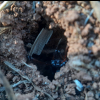
|
||
Anting →
Ant ID Requests →
Camponotus ID?Started by Turtle , Jul 24 2025 |
|
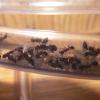
|
||
Ant Keeping →
General Ant Keeping →
Ant Colonies for Sale, Tetramorium, Lasius, ManicaStarted by Stubyvast , Jul 23 2025 |
|

|
||
Ant Keeping →
Ant Keeping Journals →
Ants_Dakota's Camponotus sp. JournalStarted by Ants_Dakota , Jul 13 2025 |
|

|
||
Ant Keeping →
Ant Keeping Journals →
AntTx's Camponotus sansabeanus JournalStarted by AntsTx , Jun 17 2025 |
|
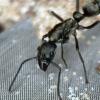
|
1 user(s) are reading this topic
0 members, 1 guests, 0 anonymous users



